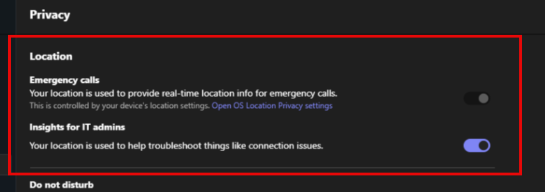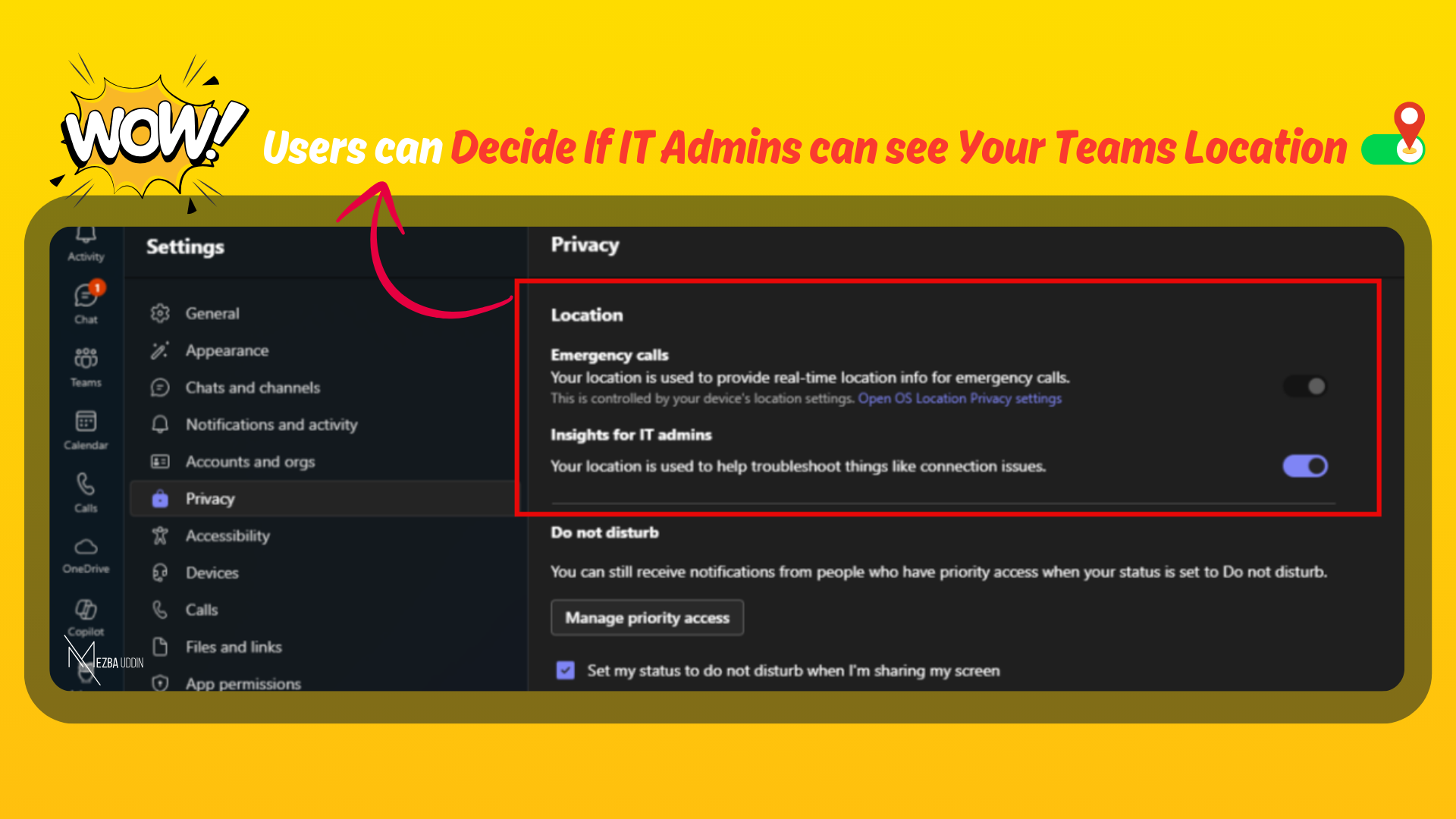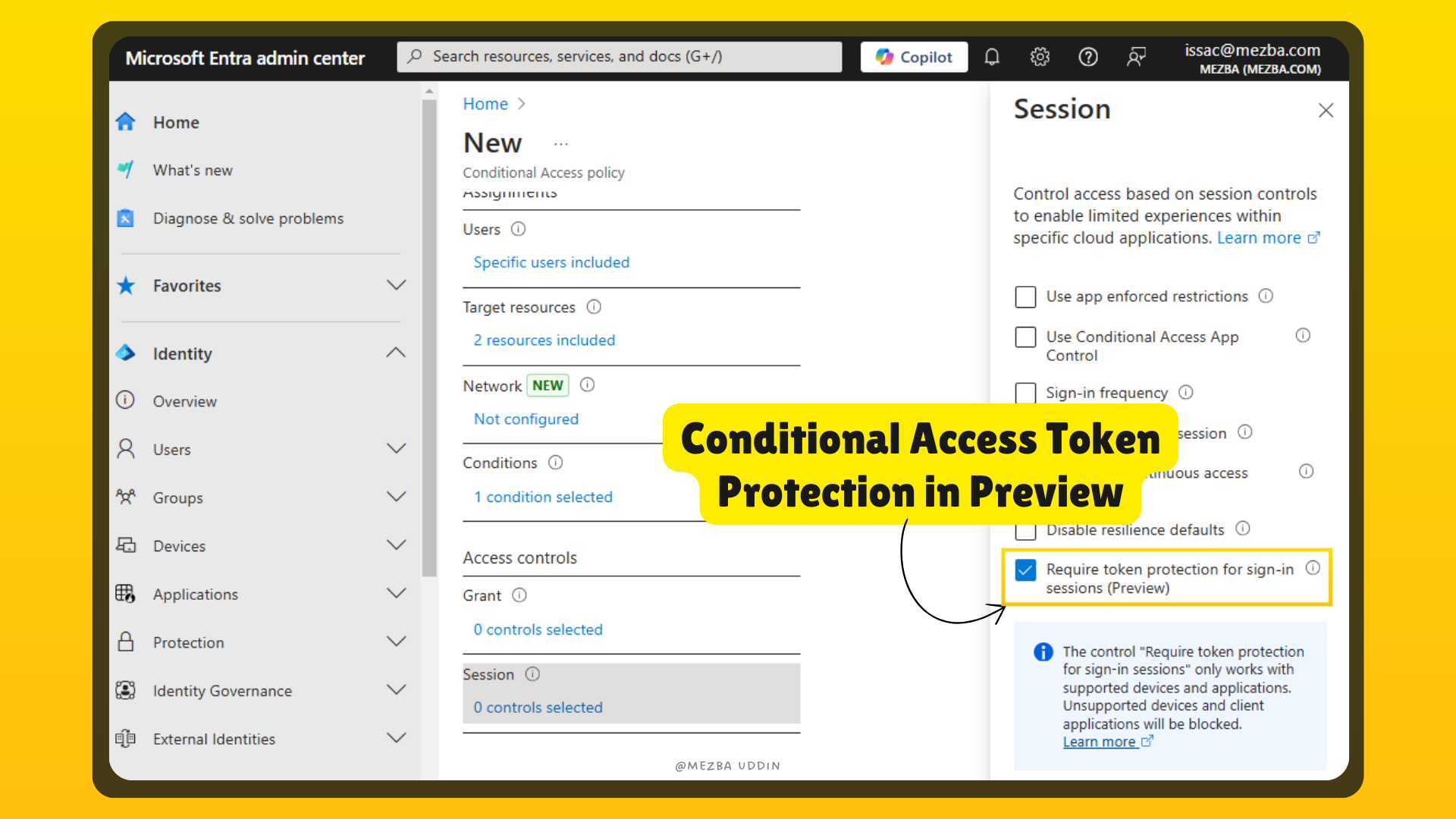If you use Microsoft Teams on a Windows or Mac desktop, you’ll want to pay attention to this —one important news that changes how location sharing works, especially for emergency calls. This update introduces more granular location access settings, affecting how Teams handles emergency dynamic policies and network bandwidth policies.
So, if you use Teams on Windows or Mac (not VDI clients), this update is for you. I’ll break it down in a way that actually makes sense and the way it handled location before vs. how it will now.
How Microsoft Teams Monitored User Locations Before
Before this update, Microsoft Teams relied only on your device’s operating system for location access. That meant:
- If your computer had location services turned on, Teams could use it.
- If location services were off at the OS level, Teams simply didn’t get access—no extra prompts, no fine-tuned control.
- Emergency calls relied on this general location setting, which wasn’t always ideal. So, dynamic emergency calls may not function correctly.
Pretty straightforward, right? Well, Microsoft decided that wasn’t enough control for users or IT teams, especially when it comes to emergency calls.
What’s Changing? New Location Sharing Settings in Microsoft Teams
The latest flexibility is Teams will require you to explicitly allow location access within the Teams app itself. That means:
- Even if your operating system has location access turned on, Teams won’t automatically inherit it anymore.
- You’ll see a pop-up asking you to confirm (or deny) Teams access to your location.
- If you don’t allow location access at both the OS and Teams levels, emergency calls may not be routed correctly—which is a big deal!
So, Microsoft is making this change to give users more control and to ensure emergency services get accurate location data.
2. Emergency Dynamic Policies & Network Bandwidth Policies
- The Emergency Dynamic Policy ensures emergency calls are routed based on real-time location data.
- The Network Bandwidth Policy helps manage video and media settings based on location.
- Users will have to manually enable location access for these features to work.
- Organizations that have configured network sites for emergency calling will need to ensure users enable location permissions.
General Information for you:
- Teams for Windows desktop (version 24H2 or greater)
- Teams for Mac desktop
- Not VDI clients (at least for now)
- Targeted Release: Early February 2025.
- General Availability: Mid-March 2025.
Why is Microsoft Making This Change?
Well, it’s all about giving users more control and ensuring safety. Location sharing can feel a bit invasive sometimes, right? But when it comes to emergency calls, it’s absolutely critical.
Imagine this: You’re in an emergency, and you need to call for help. If your location isn’t accurately shared, emergency services might not be able to find you quickly. That’s why this update is so important. By requiring location access at both the OS and app levels, Microsoft is making sure that emergency calls are routed to the nearest public safety answering point (PSAP) without a hitch.
This is especially critical for emergency dynamic calling, where accurate location data can determine whether emergency calls are correctly routed to the nearest Public Safety Answering Point (PSAP).
How to Allow Admins to Know Your Location in Microsoft Teams
Now that location settings require explicit user consent, here’s how to ensure Teams is set up correctly:
- If you’re on Windows: Go to Settings > Privacy & security > Location.
- Enable location access so that IT admins can have permission view your device’s location.
- The “Emergency calls” permission is controlled by your device’s location setting.

Honestly, even if you never make emergency calls through Teams, it’s a good idea to check your settings now rather than scramble when you actually need them.
For IT Admins:
- Inform your users about the update and its impact on emergency calls.
- Use the Emergency Service Disclaimer feature in Teams to display a message in the Calls app.
- Direct users to enable location access at both OS and app levels.
- If your organization uses network roaming policies, ensure that the “Insights for IT admins” setting is enabled under Teams Settings > Privacy > Location.
My opinion on this new setting:
Microsoft is making this change to put more control in users’ hands and to improve emergency response accuracy. But with that control comes responsibility—you’ll need to explicitly allow Teams to access your location for it to work properly.
Honestly, I think this update strikes a balance between security and user control. On one hand, giving users the ability to manage location access at both the OS and app levels is a great step toward transparency.
So, while the added control is great, clear communication from IT teams will be key to making sure this transition is smooth. A few clicks now could make all the difference when it really matters!




